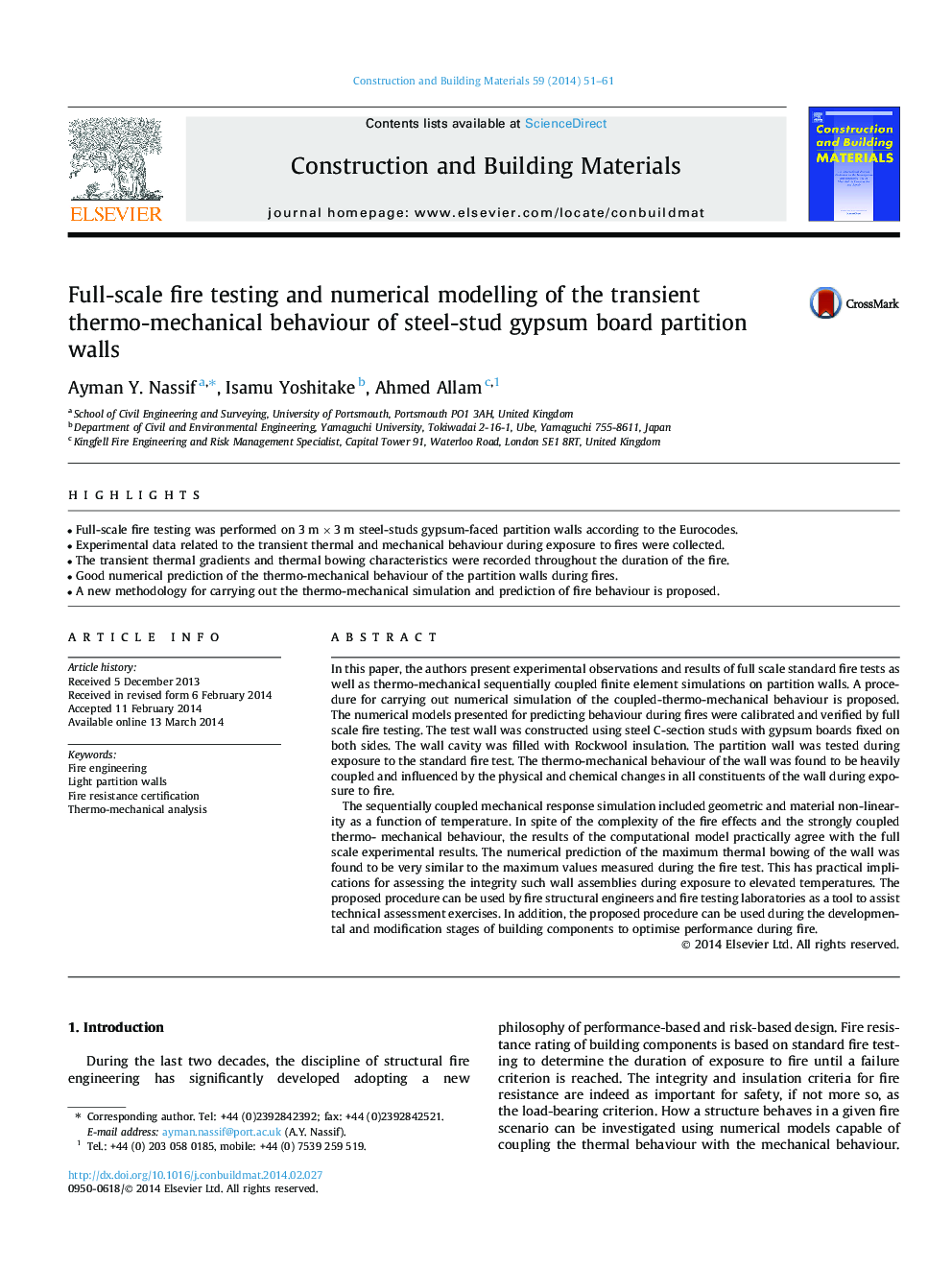| کد مقاله | کد نشریه | سال انتشار | مقاله انگلیسی | نسخه تمام متن |
|---|---|---|---|---|
| 257706 | 503599 | 2014 | 11 صفحه PDF | دانلود رایگان |
• Full-scale fire testing was performed on 3 m × 3 m steel-studs gypsum-faced partition walls according to the Eurocodes.
• Experimental data related to the transient thermal and mechanical behaviour during exposure to fires were collected.
• The transient thermal gradients and thermal bowing characteristics were recorded throughout the duration of the fire.
• Good numerical prediction of the thermo-mechanical behaviour of the partition walls during fires.
• A new methodology for carrying out the thermo-mechanical simulation and prediction of fire behaviour is proposed.
In this paper, the authors present experimental observations and results of full scale standard fire tests as well as thermo-mechanical sequentially coupled finite element simulations on partition walls. A procedure for carrying out numerical simulation of the coupled-thermo-mechanical behaviour is proposed. The numerical models presented for predicting behaviour during fires were calibrated and verified by full scale fire testing. The test wall was constructed using steel C-section studs with gypsum boards fixed on both sides. The wall cavity was filled with Rockwool insulation. The partition wall was tested during exposure to the standard fire test. The thermo-mechanical behaviour of the wall was found to be heavily coupled and influenced by the physical and chemical changes in all constituents of the wall during exposure to fire.The sequentially coupled mechanical response simulation included geometric and material non-linearity as a function of temperature. In spite of the complexity of the fire effects and the strongly coupled thermo- mechanical behaviour, the results of the computational model practically agree with the full scale experimental results. The numerical prediction of the maximum thermal bowing of the wall was found to be very similar to the maximum values measured during the fire test. This has practical implications for assessing the integrity such wall assemblies during exposure to elevated temperatures. The proposed procedure can be used by fire structural engineers and fire testing laboratories as a tool to assist technical assessment exercises. In addition, the proposed procedure can be used during the developmental and modification stages of building components to optimise performance during fire.
Journal: Construction and Building Materials - Volume 59, 30 May 2014, Pages 51–61
